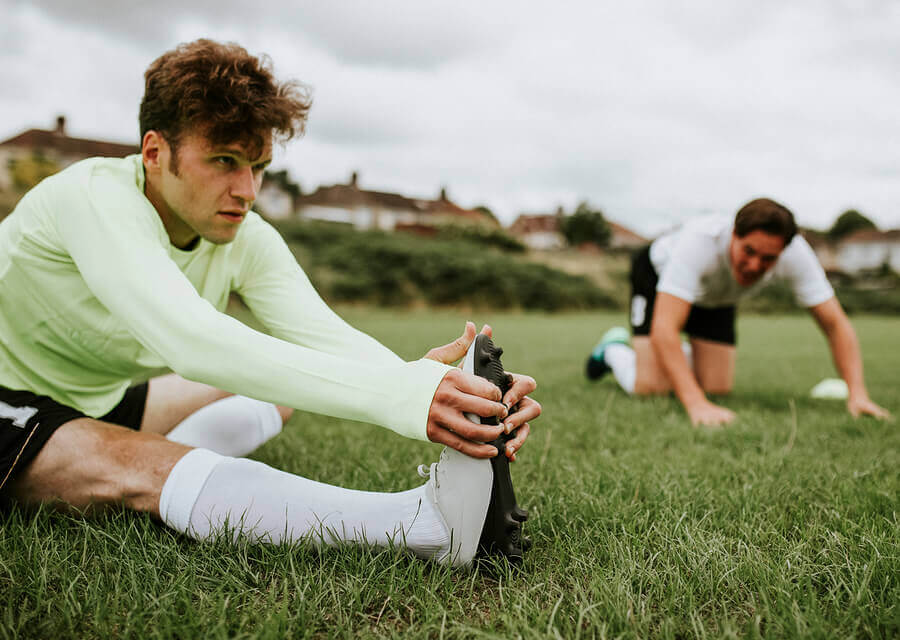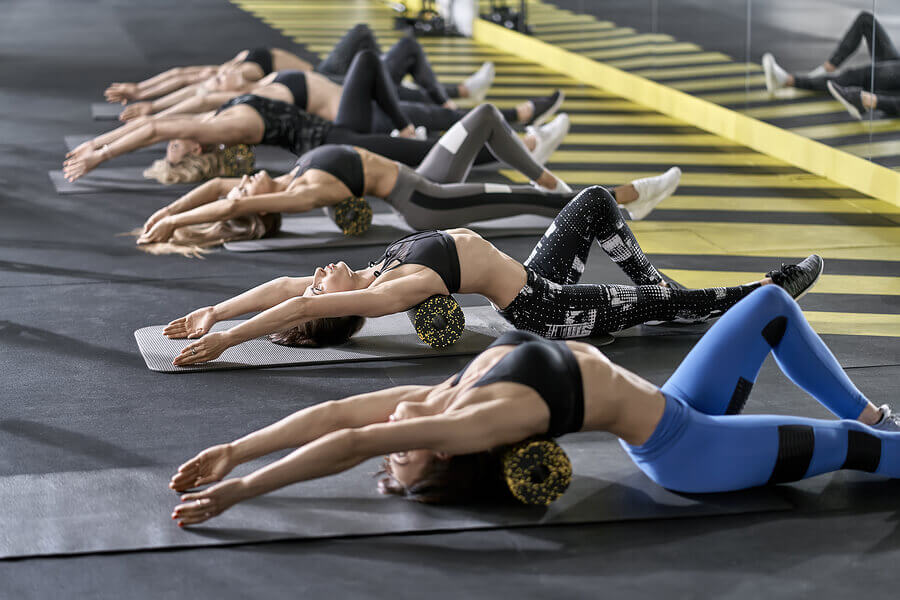Stretching Tips

Stretching can improve a person’s well-being and overall sports performance. Don’t hesitate to use the stretching tips in this article to get the most out of your routines.
Stretching is an important activity after training since it helps the muscles relax and release accumulated tension. Stretching also helps to oxygenate muscle fibers and it contributes to increasing flexibility and joint mobility.
Due to all of the factors mentioned above, stretching is important when it comes to preventing injuries and maintaining good health. It’s wise, therefore, to stretch properly and as often as necessary.
In order to get the most out of your routines, pay attention to the following stretching tips to help you stretch properly and safely.
Stretching tips
There are several types of stretching: dynamic, static and ballistic are just a few examples.
Just like there are many ways to do cardio or lift weights, there are also different ways to stretch. It’s important to know how to apply different stretching techniques depending on the occasion.
Dynamic stretching consists of making active movements, this helps the muscles increase their range of mobility. Dynamic stretching can help to warm-up muscles. However, it should not be confused with a complete warm-up routine. Dynamic stretching simply forms part of a warm-up routine.
This type of stretching is ideal for when you are going to perform exercises that involve the flexion of certain joints, such as squats or burpees.
Static stretching, on the other hand, is best to perform after intense workouts, it allows for stretching the muscles as far as the range of movement permits.

These exercises can be performed by holding the stretching position for at least 30 seconds. This movement increases blood flow and helps to release tension from joints, tendons, and muscles.
Ballistic stretching is performed by impulsing the limb to stretch it beyond its normal range of motion. Ballistic stretching is usually performed with force.
It’s important to stretch appropriately according to the activity that you plan to carry out. This will help to prevent injuries.
Avoid being tense
While exercising, muscle contractions are important. However, while stretching, your muscles shouldn’t be contracted.
Keep in mind that the goal of stretching is to increase your range of motion. If you’re tense, stretching may end up being painful and difficult to perform.
While following these stretching tips, keep your body relaxed and firm. Breathe consciously in order to propel oxygen throughout your body. This will make the process of stretching more pleasurable.
Avoid rebounds
At first, stretching exercises may be difficult to carry out. Some people use little rebounds to reduce the pressure of stretching. This movement, however, can be harmful to the body.
Rebounding while stretching can cause micro-tears in the muscles. These injuries will leave scar tissue where the muscle heals. Scar tissue can make muscles tense, making them even less flexible and prone to pain.
Use a foam roller
The foam roller can be a great ally when it comes to stretching. It’s even more important after performing an intense workout.
When using the foam rollers, you should stretch all of the muscle groups. This will help you relieve muscle tension in order to dissipate the hardening that can accumulate in the muscle fibers.
Using the foam roller, you’ll be able to realign your muscle fibers. This will allow your neuromuscular system to effectively activate the muscles you will use while training.

Don’t apply too much pressure while training
If your plan is to become more flexible, it’s important to be patient when it comes to your stretching routine. If you apply too much pressure to your extremities you may cause severe injuries.
Therefore, the secret is to be gentle while carrying out your stretching routines. This way, your body will assimilate the exercises and little by little you’ll become more flexible.
In conclusion, stretching brings along many benefits on a muscular and mental level. It can help to relieve stress and relax the body. Keep these tips in mind when you’re going to stretch. You’ll notice the progress in your recovery.
Stretching can improve a person’s well-being and overall sports performance. Don’t hesitate to use the stretching tips in this article to get the most out of your routines.
Stretching is an important activity after training since it helps the muscles relax and release accumulated tension. Stretching also helps to oxygenate muscle fibers and it contributes to increasing flexibility and joint mobility.
Due to all of the factors mentioned above, stretching is important when it comes to preventing injuries and maintaining good health. It’s wise, therefore, to stretch properly and as often as necessary.
In order to get the most out of your routines, pay attention to the following stretching tips to help you stretch properly and safely.
Stretching tips
There are several types of stretching: dynamic, static and ballistic are just a few examples.
Just like there are many ways to do cardio or lift weights, there are also different ways to stretch. It’s important to know how to apply different stretching techniques depending on the occasion.
Dynamic stretching consists of making active movements, this helps the muscles increase their range of mobility. Dynamic stretching can help to warm-up muscles. However, it should not be confused with a complete warm-up routine. Dynamic stretching simply forms part of a warm-up routine.
This type of stretching is ideal for when you are going to perform exercises that involve the flexion of certain joints, such as squats or burpees.
Static stretching, on the other hand, is best to perform after intense workouts, it allows for stretching the muscles as far as the range of movement permits.

These exercises can be performed by holding the stretching position for at least 30 seconds. This movement increases blood flow and helps to release tension from joints, tendons, and muscles.
Ballistic stretching is performed by impulsing the limb to stretch it beyond its normal range of motion. Ballistic stretching is usually performed with force.
It’s important to stretch appropriately according to the activity that you plan to carry out. This will help to prevent injuries.
Avoid being tense
While exercising, muscle contractions are important. However, while stretching, your muscles shouldn’t be contracted.
Keep in mind that the goal of stretching is to increase your range of motion. If you’re tense, stretching may end up being painful and difficult to perform.
While following these stretching tips, keep your body relaxed and firm. Breathe consciously in order to propel oxygen throughout your body. This will make the process of stretching more pleasurable.
Avoid rebounds
At first, stretching exercises may be difficult to carry out. Some people use little rebounds to reduce the pressure of stretching. This movement, however, can be harmful to the body.
Rebounding while stretching can cause micro-tears in the muscles. These injuries will leave scar tissue where the muscle heals. Scar tissue can make muscles tense, making them even less flexible and prone to pain.
Use a foam roller
The foam roller can be a great ally when it comes to stretching. It’s even more important after performing an intense workout.
When using the foam rollers, you should stretch all of the muscle groups. This will help you relieve muscle tension in order to dissipate the hardening that can accumulate in the muscle fibers.
Using the foam roller, you’ll be able to realign your muscle fibers. This will allow your neuromuscular system to effectively activate the muscles you will use while training.

Don’t apply too much pressure while training
If your plan is to become more flexible, it’s important to be patient when it comes to your stretching routine. If you apply too much pressure to your extremities you may cause severe injuries.
Therefore, the secret is to be gentle while carrying out your stretching routines. This way, your body will assimilate the exercises and little by little you’ll become more flexible.
In conclusion, stretching brings along many benefits on a muscular and mental level. It can help to relieve stress and relax the body. Keep these tips in mind when you’re going to stretch. You’ll notice the progress in your recovery.
All cited sources were thoroughly reviewed by our team to ensure their quality, reliability, currency, and validity. The bibliography of this article was considered reliable and of academic or scientific accuracy.
- Mohr, A. R., Long, B. C., & Goad, C. L. (2014). Effect of Foam Rolling and Static Stretching on Passive Hip-Flexion Range of Motion. Journal of Sport Rehabilitation, 23(4), 296–299. https://doi.org/10.1123/jsr.2013-0025
- Ayala, F., Sainz de Baranda, P., & Cejudo, A. (2012). El entrenamiento de la flexibilidad: técnicas de estiramiento TT – Flexibility training: tretching techniques. Rev. Andal. Med. Deporte, 5(3), 105–112. Retrieved from http://pesquisa.bvsalud.org/portal/resource/pt/ibc-107471
This text is provided for informational purposes only and does not replace consultation with a professional. If in doubt, consult your specialist.








